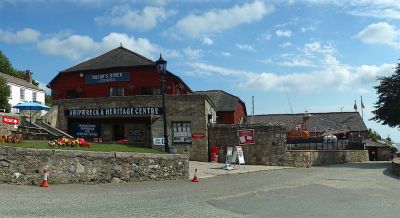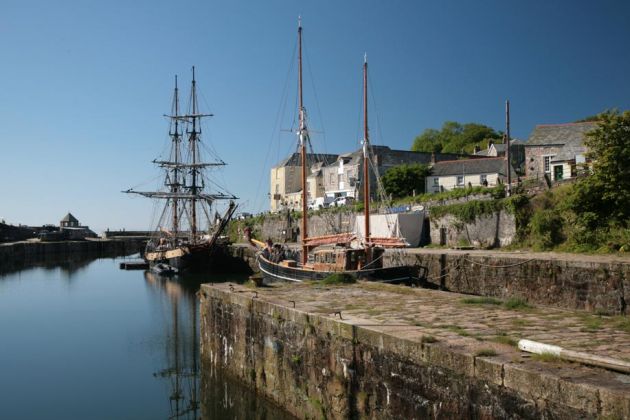
Two hundred years ago, West Polmear, was a tiny fishing village with only three cottages and no harbour, where people made a living from catching pilchards. A local businessman, Charles Rashleigh, had a vision of creating a thriving port here to ship out the china clay, Cornwall's 'white gold', from the pits and mines in the St Austell area. He succeeded in creating the Georgian port, which has remained relatively unspoilt and which was ultimately renamed Charles' town, in honour of its creator.
The activity and facilities created by the shipping of china clay generated other trade. Before long pilchards, stone, tin, copper, timber and coal were all being exported from the small harbour, around which quaint granite cottages nestled. Rashleigh not only supervised the mammoth task of constructing the harbour but also built a gun battery to protect the village. This was used by the look-out man, known as the 'huer', who could spot shoals of fish and guide the local boats to the fish.
The shipwreck paraphernalia and other historical artefacts in the centre form the largest private collection of this type on public display in Europe. These items have been brought together over the last half century to create an unusual and interesting collection, including artefacts from more than 150 shipwrecks. Other exhibitions reflect the history of village life in Charlestown and the once thriving china clay industry. The exhibition includes one of the largest underwater diving equipment collections in the country, including various suits used for treasure seeking, in addition to a range of items from maritime history dating back to 1715.
A number of animated scenes depict various aspects of life in Charlestown through the ages. Visitors can see a blacksmith's shop and a cooperage. The latter industry thrived in the early days of Charlestown, when barrels were used to transport both fish and clay. As more ships used the harbour, local businesses flourished and the population grew. More cottages, an inn, a chapel and eventually a church were built.
Today Charlestown is still a working port and is also a tourist destination. The Grade 2 listed harbour and the innate charm of the village attract thousands of people every year. Only a couple of small fishing boats still operate from the port, but Charleston is frequently used as a set for film and television.
In the Audio Visual Theatre the saga of the creation of Charlestown unfolds, from the 1791 blueprint, through a century of growth to the gradual decline to the peaceful village of today. The Shipwreck section shows a sample of wrecks from around the coastal waters, in photography and salvaged wreckage and cargo. The latter items range from a 400 year old cannon to priceless Nanking porcelain. The Centre's most recent addition is the fully operational lifeboat 'Aurelia', which is on display for all to see how RNLI volunteers face the elements.
The complex is located in an historic china clay building, where one can walk through underground tunnels where clay trucks were once pushed out to the ships in the port. The final display in the Shipwreck and Heritage Centre features various treasures of the sea, including coins from different countries and centuries, telescopes, muskets and even 'pieces of eight'.
A well stocked shop offers a wide range of maritime and Cornish gifts. Charlestown is signposted from the A390 just outside St Austell and the centre is open from the beginning of March until the end of October each year.







